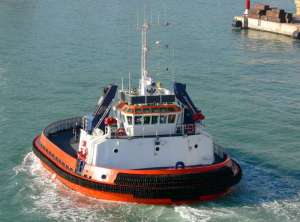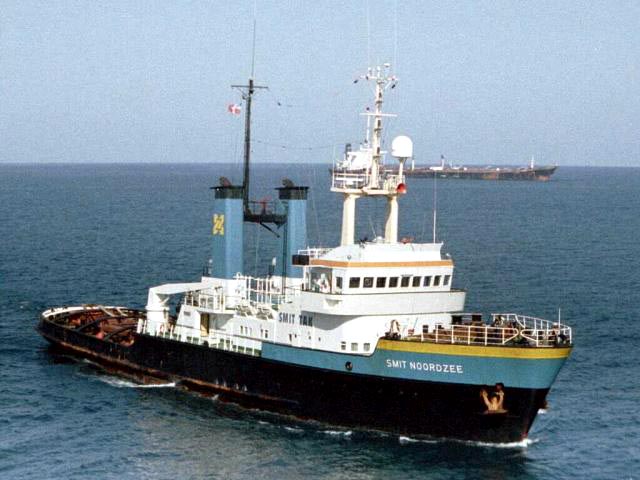A Brief Guide to Tugs and Towing
Tugboats are small but very powerful vessels which were developed to specifically assist other vessels (by pushing or towing them from a to b, moving them around in canals or harbours, fire fighting etc.).
Today they are more advanced than ever and can perform a multitude of tasks but the basic construction of a simple harbour tug remains broadly as the following diagram. You will notice a towage rope for assisting other vessels and heavy 360o fendering (the tyres)

TERMINOLOGY
– A tug is always a boat, and not a ship. The craft began their lives as relatively small vessels and so will forever be categorized as such, even though today many are very large vessels.
– A tug tows other vessels using a towage or towing line (when a piece of rope is used) or a wire (when some form of metal rope is used).
TYPES

General Harbour Tugs – The most common form, they perform a multitude of general assistance tasks around ports and harbours. Generally small and do not venture far from the harbour or port limits.

SDMs (Ship Docking Modules) – These are very specialised little tugs used to help moor other small vessels, normally yachts, in tight marinas. Because they need to be so versatile and gentle with their charge they look a little bit like padded floating saucers.

Ocean-Going Tugs – These are much larger tugs used to tow vessels over a long journey in potentially hazardous seas.

AHTS (Anchor Handling Towage Supply) Tugs – These vessels provide support for offshore structures in the energy industries, both old and new. They are specially built to be able to raise huge anchors belonging to offshore rigs, tow vessels and platforms where necessary and carry supplies out to them.
CONTRACTS
For a look at the principal contracts involved in Towage work see this article.
